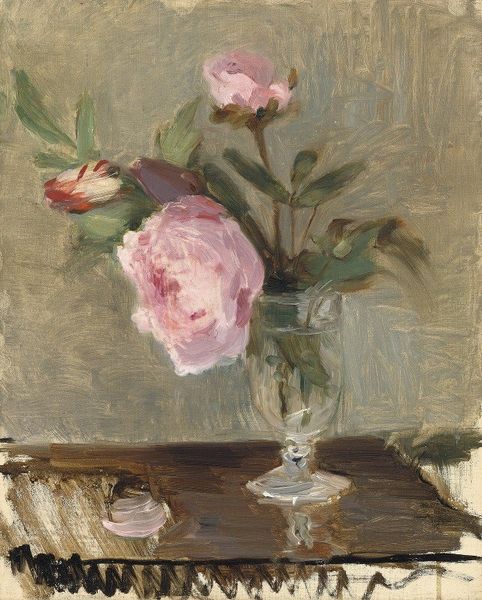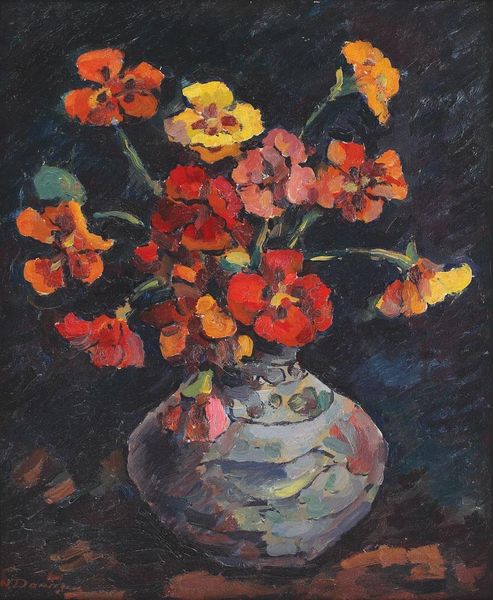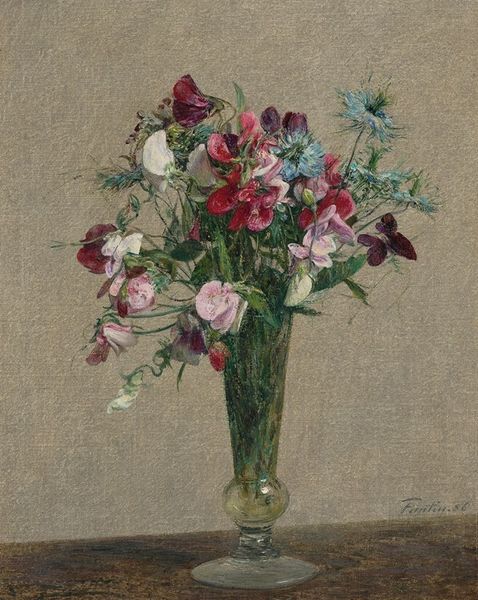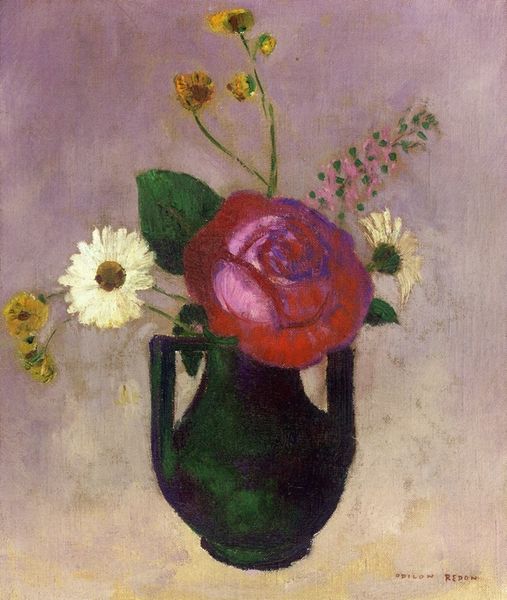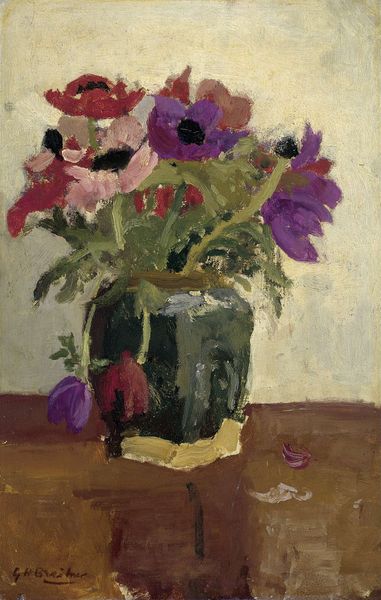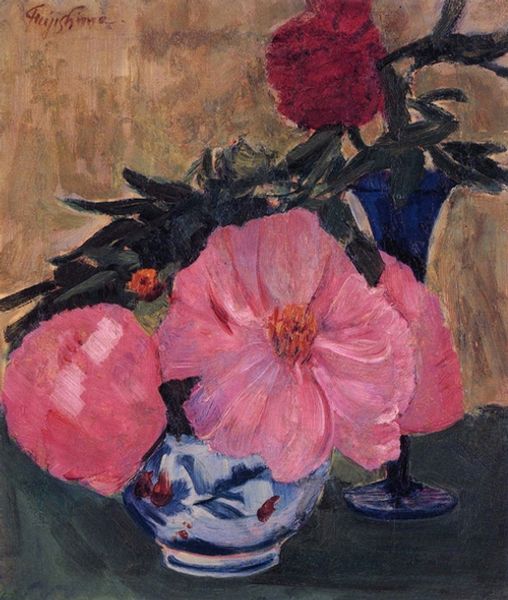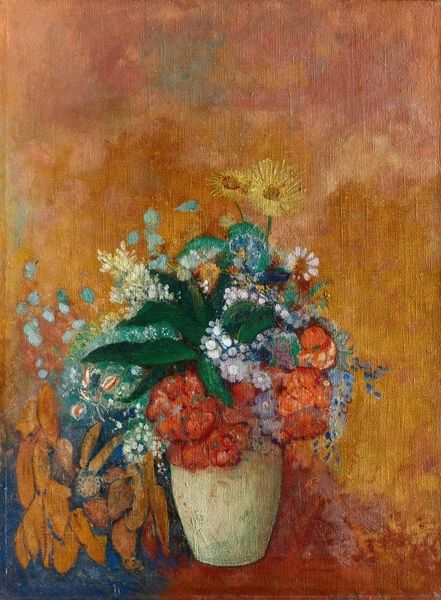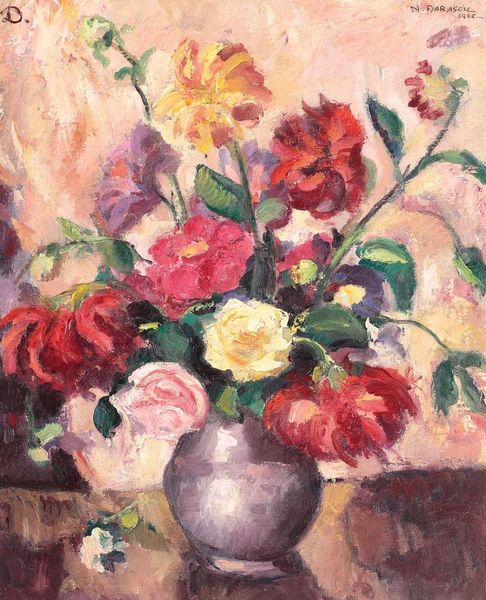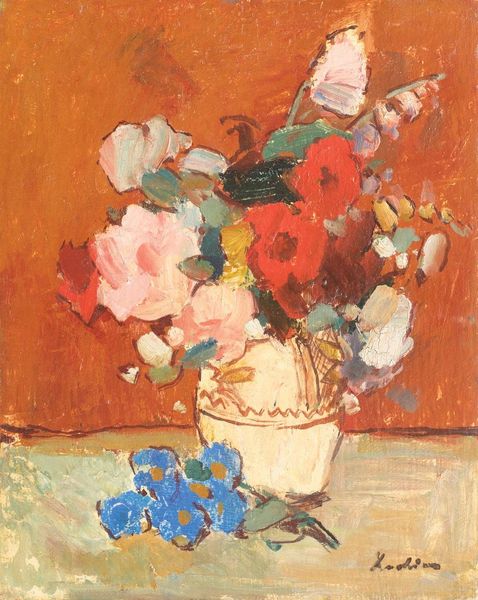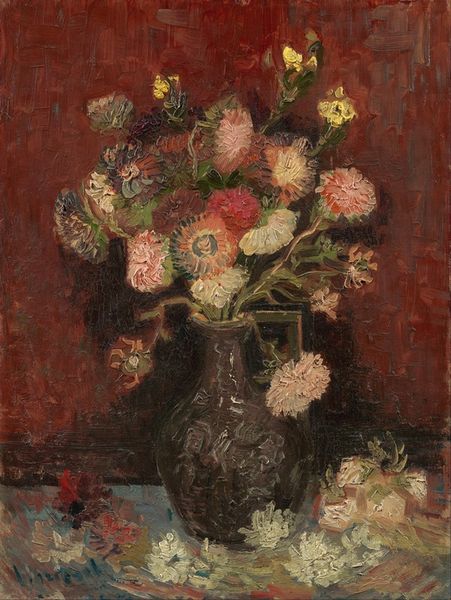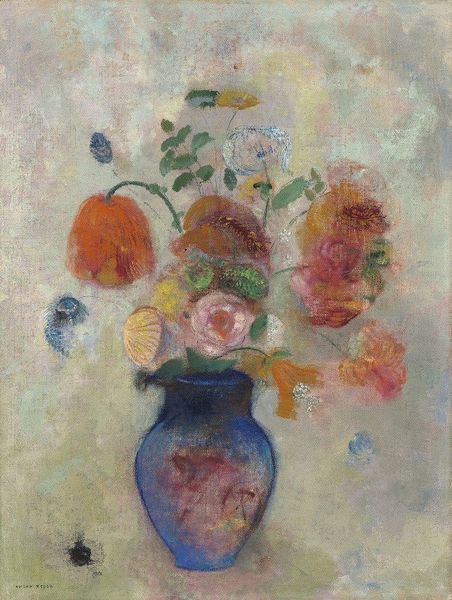
oil-paint, photography, impasto
#
still-life
#
oil-paint
#
photography
#
oil painting
#
impasto
#
romanticism
Copyright: Constantin Artachino,Fair Use
Curator: Standing before us, we have a painting entitled "Pipkin with Mallows" by Constantin Artachino. What strikes you first about it? Editor: Oh, the velvet richness of the impasto oil paint just wraps around you! There's something sweetly melancholic about the muted tones of the blooms contrasted against the warm earthiness of that brown background, like faded memories captured on canvas. Curator: I'm interested that you mention "memories," because still-life paintings such as this are deeply embedded in social conventions and domestic practices of the time. The work invites questions around class, taste, and gender roles. Editor: Hmm, class roles hiding in plain sight with a vase of mallows. Interesting thought, I hadn't considered the societal dimensions. Curator: These weren't just decorations; they were signifiers of status, markers of cultivated beauty amid increasing industrialization. Look at how the vase itself hints at craft production. The very means of representation is tied to labor and economy! Editor: You’re so right! It feels quite tender the way the brushstrokes are like the touch of the hand, it makes me feel close to the painting's creator and even to myself! There is a comforting, contemplative intimacy it encourages that brings joy to one's senses. Curator: It is fascinating how artists utilized impasto for effects to create the illusion of materiality, adding depth and emphasizing tactility as markers of quality during a period of mass reproduction of images. It all invites viewers to partake in what was culturally accepted during the era it represents, something that goes well beyond its time. Editor: It's funny. For me, as much as I intellectually acknowledge the cultural context, that tactile illusion sparks my desire to gently touch a velvet flower, in an atmosphere filled with dreams. Thanks for opening my eyes wider, materialistically speaking. Curator: And thank you, the feelings in our responses illustrate that even analyses entrenched in social constructs, still permit access to a rich visual language, to engage with Artachino´s time, or our time, and that can allow both individual joy and deeper reflection.
Comments
No comments
Be the first to comment and join the conversation on the ultimate creative platform.

